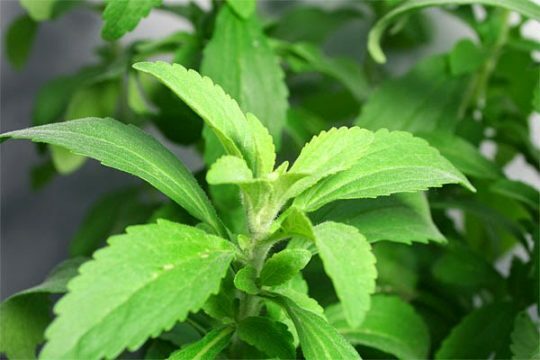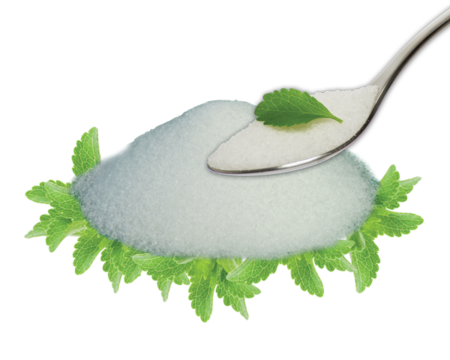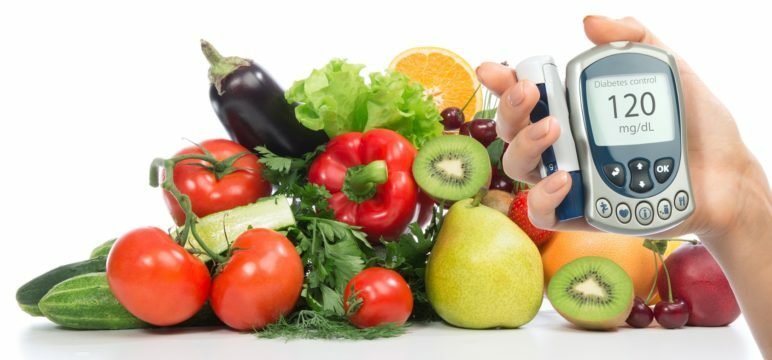Stevia herb in diabetes mellitus deserved among the diabetics the glory of a tasty and useful sweetener. It should be considered what kind of plant it is, in what forms it is produced and where it grows, as well as the benefits and harm of stevia grass in diabetes mellitus.
 Application and properties of
Application and properties of
Diabetes and stevia are related to the fact that diabetes can not use sugar and honey as sweeteners, and stevia is used as a safe sausage substitute. Its properties are related to the substances contained in it: stevioside, rebaudioside, dulkozide, rubuzozid. This glycosides have a sweet taste, because the grass itself and its extracts are added by diabetics to tea and any recipes with stevia.
Stevioside is used for the production of a food additive, is recognized as a safe sweetener for diabetics. The native land of the plant is in America.
In our region, stevia grows in the Crimea and the Krasnodar Territory, in addition, the seeds of this plant from diabetes are sold in stores and can be planted from any gardener.
The outlines of grass are like a mixture of mint, lemon balm and nettle. It blooms with white small flowers and elongated petals and yellow stamens.
Composition and nutritional value of
Particularly important information for a patient with type 2 diabetes is the amount of carbohydrates and kilocalories per hundred grams of the plant. If the grass is used in kind, brewing the leaves, the calorie content is 18 kcal per hundred grams. If its extract is used, then the caloric value is zero.
The carbohydrate content in its composition reaches a maximum at 0.1 g, which is enough for a hundred grams to influence the total glucose concentration in the systemic bloodstream of a diabetic.

Its chemical composition includes:
- Phosphorus, manganese, cobalt, chromium, selenium, aluminum, fluorine, calcium.
- Group B, K, C vitamins, carotene, nicotinic acid, riboflavin.
- Essential oil of camphor and limonene.
- Flavonoids and arachidonic acid.
Among the flavonoids in its composition, rutin, quercicitin, aviculary, and apigenene have been found. Basically, all these substances are contained in the leaves of the plant. The most safe dose is considered to be 2 mg / kg of body weight per day.
How to take
Different firms produce powders from stevia leaves for use in type 2 diabetes, and ready-made extracts and sugar substitutes are also produced. A diabetic can simply brew tea on the ground leaves of a plant. The plant itself is sweeter than sugar thirty times, and the sweetness of the extract is higher than the sweetness of sugar three hundred times.
One teaspoon of sugar can be replaced by a quarter teaspoon of ground leaves, stevioside at the tip of the knife or five drops of extract. Produced in the form:
- Tablets in the packaging-dispenser;
- Powder similar to sugar;
- Syrup and extract in drops.
At high temperatures, glycosides are not destroyed, therefore it is possible to prepare homemade cakes and other products with stevia, simply by replacing sugar in the initial recipe with stevia from the ratio indicated above. The amount of stevia used must be at least half that of the amount of sugar prescribed in the recipe, while there is no need to reduce the number of other components.
Benefits and Harms of
Stevioside is also available as ready-made beverages, for example, a mixture of chicory with stevia as an alternative to coffee beverages. This plant has its advantages and contraindications.
The remarkable effect of stevia from diabetes is complete safety and no effect on glucose concentration. Studies on pathological effects have been conducted in Japan for thirty years, where stevioside has been actively used as an alternative to sugar. During this time, no negative feedback was received about stevia.
Do not think that the plant has any diabetic therapeutic effect. Rather, it is a supportive tool and an outlet for diabetics who can not refuse sweets, but it can not be said that stevia is used as a therapy.
Among the benefits noted improvement of the smell from the mouth, prevention of caries, maintaining vitality, help in reducing weight due to the lack of sugar in the carbohydrate component.
Allergic reactions
A harmful plant can be found if a person has an allergic sensitivity or has developed an individual intolerance. For this reason, the reception should be started neatly and only after consultation with the attending physician.

Allergy can manifest itself in difficulty with breathing, hives, redness of individual skin areas, spots, small rashes with itchy, burning sensation. At the same time, you should stop taking stevia or its extract, and also contact an allergist or therapist to prescribe antihistamine therapy to avoid complications of an allergic reaction.
Indications and contraindications
Indications for the use of stevia and its concentrated syrups are:
- Diabetes mellitus, regardless of whether the second or the first type;
- Pathologies of glucose tolerance;
- Diets Ducant and Atkins;
- Clinical forms of obesity.
Use is allowed for patients with pyelonephritis, pancreatitis, gall bladder diseases, including with stones, and even with cancer. In chronic candidiasis, the disease does not promote the spread of the fungus, since the microorganisms of the Candida family process carbohydrates, and in the stevia they are not, because it is not suitable for maintaining their vital functions.
Allergic reactions to plants and the family of Compositae, in particular, are a contraindication. If you have previously found allergic reactions to these or other common allergens, you should conduct a test - use the minimum dose of 0.1 g and follow the reaction of the body for twelve hours. When using a syrup, a drop of it is triturated on the wrist and the reaction is also checked for twelve hours.
Conclusion
Stevia grass and supplements based on it are not a medicinal product, but serve only as a sweetener. Especially cautious should be used for allergy sufferers, otherwise, the substitute is more useful than harmful and will serve patients with diabetes mellitus of any type.




